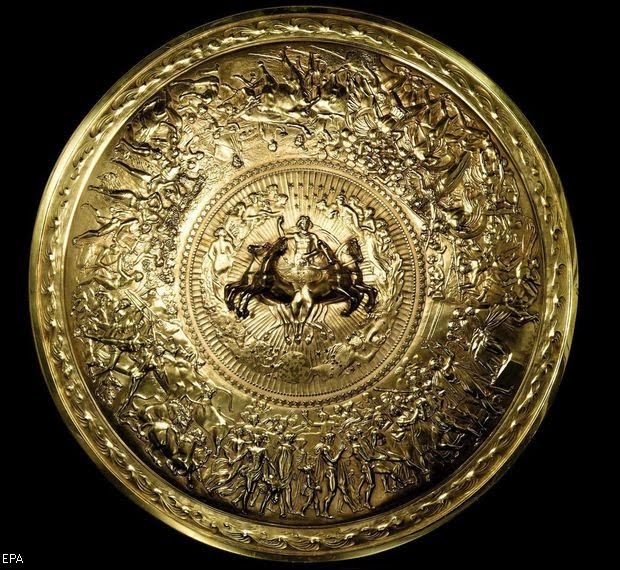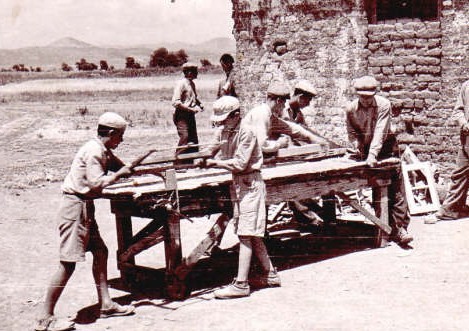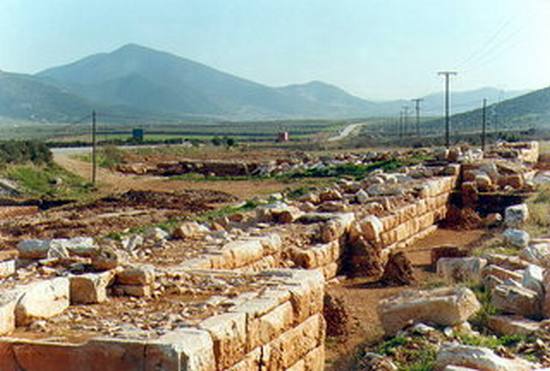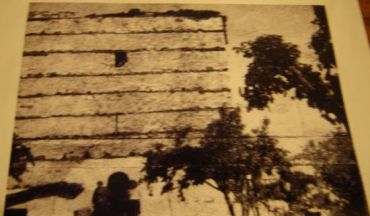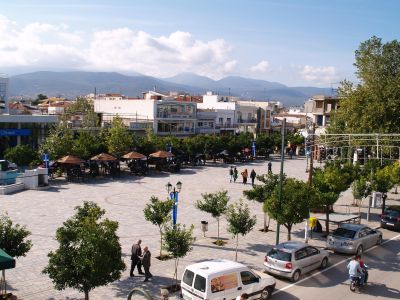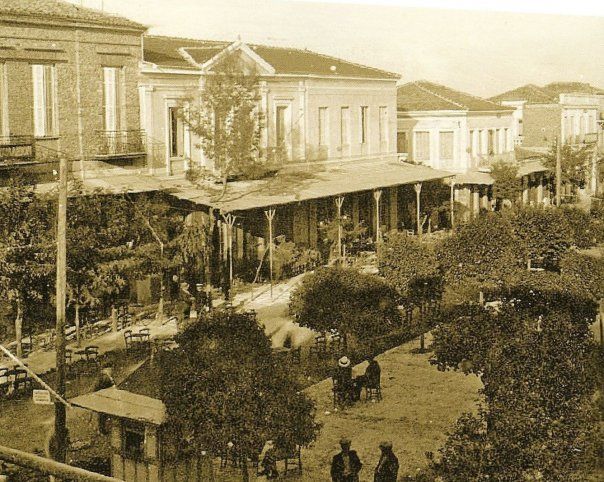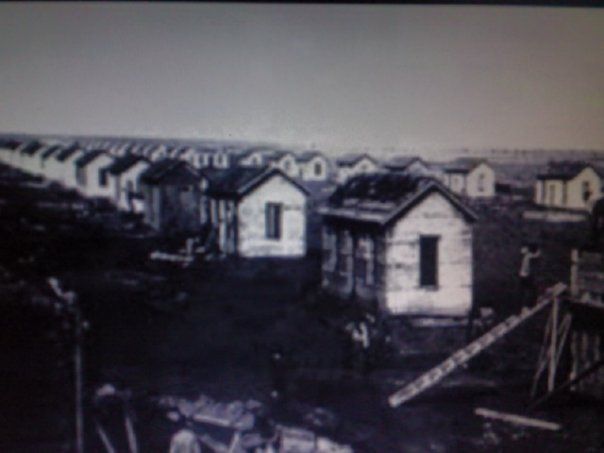Antiquity to Byzantium
The evidence of human presence in the Almyros area, which has been identified today, is not yet able to give us very deep dates in human history. Significant findings have been uncovered by archaeological research. Human presence in the wider area has been intense since the Neolithic era.
The wider Almyros area in antiquity was called Achaia Phthiotis. Almost the entire Almyros – Sourpi plain constituted the so-called Athamantian plain, named after King Athamas. The whole region has rich mythology (King Athamas, Phrixus and Helle, Achilles and the Myrmidons, Protesilaus) and a rich historical past (Alos, Phylaki) from the Neolithic times to the present.
The beginning of Almyros’ history must be sought in ancient Alos, near present-day Kefalosi (about 10 km from Almyros). The city of Alos was significant in antiquity and populous. Its founder was the Boeotian king Athamas, who was expelled from Boeotia and came to the area of Achaia Phthiotis, where he founded the city. Athamas is the father of Phrixus and Helle. Their mother was Nephele. The two siblings were rescued by their mother on a golden-fleeced ram to save them from the sacrifice ordered by their father. As they flew over the Bosporus, Helle fell, and from then on this area was called Hellespont. Phrixus traveled to distant Colchis, where the ram was sacrificed to the gods, but its hide was kept as a talisman. This is the famous Golden Fleece for which the Argonauts traveled to Colchis.
Ancient Alos was known in antiquity for its port and the role it played in the Persian wars, as well as in the Trojan War. It was the capital of the Myrmidon state and the Homeric hero Achilles, who set out for the Trojan expedition from Neai, a coastal settlement of Sourpi. Achilles was the son of Peleus and Thetis, famous for his nobility, piety, and bravery. He is the main hero of Homer’s Iliad, a model warrior and proud man.
According to one version, the inhabitants of Alos, when they faced many attacks from the sea, had to abandon the settlement and build another safer one northwest of Bryna. The ruins of this Hellenistic settlement are recorded by the archaeological service and are located 3 km from the village, on a rock outcrop, protected on three sides by cliffs. The settlement may have been called Dion or Orchomenos. Some sections of its walls with large stone blocks survive. Locals call these ruins “Castle.”
Near the “Castle” of Bryna is another ancient settlement, located to the west and 6 km away on the slopes of the “Pilioura” peak. In a very good fortified position, accessible only from one side, it is not mentioned anywhere and is not officially recorded.
The Thessalian king Protesilaus was one of the most important kings in the Almyros area. Specifically, he ruled a wider area, including the ancient cities of Phylaki, Iton, Antron, and Pteleos. With forty ships, he took part in the Trojan War. However, he did not live to fight, as he was killed immediately upon landing in Troy (knowing in advance and following the oracle’s prophecy, which stated that the first Greek to set foot on Trojan soil would die).
Two of these significant ancient cities belong to the Municipality of Almyros. On the borders of our Municipality with the Municipality of Farsala lies the village of Phylaki. Ancient Phylaki was founded by King Phylakos, succeeded on the throne by his son Ifiklos, father of the Trojan War hero Protesilaus. The first settlements in Phylaki date back to the Neolithic era, around 5,000 BC. The prehistoric settlement continued to be inhabited during the Bronze Age and in later historical periods.
Pteleos, the other city ruled by Protesilaus, is among the few cities that have retained the same name from the Homeric era to today. However, Homer mentions Ftelio, in the feminine form (Pteleos), but does not refer to it as a place with elm trees. The village’s name is not, as some believe, due to many elms growing in the area, but perhaps because the elm was considered a sacred tree, as it is said that the tomb of Protesilaus was shaded by elms. Pteleos’ significant history begins in pre-Homeric times, having established a namesake colony in the Peloponnese, and during the Peloponnesian War (421 BC) it was one of the most important ports.
Far from the coastal areas and the plain, in the heart of Othrys lies Anavra, where remains of acropolises have been found, indicating settlements from ancient times. Initially, the castle “Morgias”, a Hellenistic acropolis with strong walls preserved to great height and extent. Near the acropolis, extensive ruins of ancient buildings are found. To the east of the castle, there is an ancient cemetery. East of “Morgias” castle is the “Koumarrochi” castle with Mycenaean tholos tombs. North of the settlement and east of “Koumarrochi,” on top of a rocky hill, ancient ruins survive. East of the “Kommenos Vrachos” and north of Anavra, near the provincial road Anavra – Almyros, lies the “Grintias” Castle. In the area, there is a small castle 200 m in diameter with a wall. Within the enclosure, foundations of Hellenistic buildings are visible, as inferred from collected ceramic findings.
However, Mycenaean tholos tombs have been found not only in Anavra but also in the Pteleos area. At Gritsa, at the foot of the acropolis of Homeric Pteleos, the ruins of a Middle Helladic settlement were found. Four Mycenaean tombs are located at the hill’s base and one at Agioi Theodoroi. All the above show that the site began to be inhabited at the end of the Neolithic period and was definitively abandoned by the end of the Middle Helladic period.
Certainly, in the wider area of the Municipality of Almyros, there are other ruins of ancient settlements, walls, acropolises, and cemeteries that have not yet been sufficiently studied and explored.

